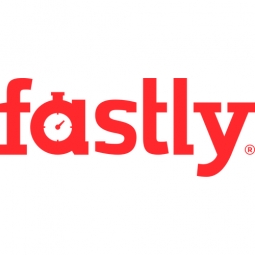Case Studies.
Add Case Study
Our Case Study database tracks 22,657 case studies in the global enterprise technology ecosystem.
Filters allow you to explore case studies quickly and efficiently.
Download Excel
Filters
-
(6,653)
- (2,601)
- (2,127)
- (945)
- View all
-
(5,642)
- (2,469)
- (1,692)
- (826)
- View all
-
(5,571)
- (2,178)
- (1,766)
- (643)
- View all
-
(5,247)
- (2,179)
- (1,715)
- (1,321)
- View all
-
(2,881)
- (1,448)
- (574)
- (376)
- View all
- View all 15 Technologies
- (1,985)
- (1,985)
- (1,915)
- (1,679)
- (1,629)
- View all 42 Industries
- (8,728)
- (4,742)
- (3,618)
- (3,233)
- (2,947)
- View all 13 Functional Areas
- (3,304)
- (2,787)
- (2,603)
- (2,006)
- (1,630)
- View all 129 Use Cases
- (13,581)
- (5,296)
- (4,272)
- (3,520)
- (2,856)
- View all 9 Services
- (504)
- (432)
- (416)
- (382)
- (301)
- View all 1083 Suppliers
Selected Filters

|
Optimizing Community Policing with MyRouteOnline Route Planner
The Community Policing Department of Port Alberni, in partnership with the Royal Canadian Mounted Police, was faced with the challenge of efficiently managing volunteer resources. The department's volunteers were tasked with delivering awareness letters to crime victims' residences every month. The challenge was to optimize volunteer time and ensure quick delivery of these letters. The department needed an easy-to-use delivery app or software that would automatically optimize routes, reducing the need for manual planning and scheduling. The app also needed to be compatible with the department’s iPad devices. The department plans routes once a month, with approximately 20 stops. Stops are often added based on crime stats, requiring a solution that could automatically update stops and adapt the route to ensure the volunteer drivers are still on the shortest, quickest, and most efficient path.
|
|
|

|
Carter's Transformation in On-Demand Delivery with Route4Me’s API
Carter, a leading provider of logistics solutions in South Africa, began as a ride-hailing startup in 2020. However, due to the Covid-19 pandemic, the demand for people-moving services declined as residents stayed home instead of shopping at brick-and-mortar stores. Recognizing an opportunity in the delivery logistics industry, Carter decided to pivot from people to packages. As the company grew, the need for efficient route planning became evident. Their in-house route planning algorithm could only handle up to 10 stops and required more computational resources on their servers than they had anticipated. This led Carter to seek a specialized solution for their route planning needs.
|
|
|

|
RVU's Strategic Use of Fastly's Edge Cloud Platform for Enhanced User Experience and Business Scalability
RVU, a leading tech company in the UK, owns several market comparison sites and apps. The company has grown through strategic acquisitions, which has led to inconsistencies in tech stacks as each acquired business comes with its own back-end architecture, integrations, and more. This inconsistency posed a challenge to RVU as it sought to provide a secure, single layer of consistency across all its brands. Furthermore, as users have grown increasingly reliant on price-comparison tools, their expectations around security and privacy have also increased. RVU needed a solution that would not only standardize operations across all brands but also fortify all of its brands equally in terms of security and privacy.
|
|
|

|
Revolutionizing Ad Streaming: SeenThis and Fastly's Sustainable Solution
SeenThis, a Stockholm-based ad streaming company, was facing a series of challenges. The company, which works with 80 of the top 100 advertisers in over 40 countries, was dealing with an average of 40 billion requests per month from over 1,000 customers. Their proprietary adaptive streaming technology was designed to remove the limitations of conventional ad serving technology, but they were struggling with their existing first-generation CDN, which couldn't provide the necessary configuration for delivering custom content based on different variables. Additionally, their previous logging and monitoring system, which utilized open-source tools like nginx and RabbitMQ on AWS, was becoming slow and unreliable, making it difficult to manage the increasing number of requests. Furthermore, as environmental concerns became more pressing, SeenThis needed more detailed reporting capabilities to evidence their unique mix of performance and sustainability.
|
|
|

|
Shoptimize's Scalability and Performance Enhancement with Fastly's AI Solutions
Shoptimize, a pioneer of AI solutions for direct-to-consumer (D2C) retail platforms, was facing challenges in scaling its services. The company needed to provide a seamless online experience for its users, regardless of whether there were 5,000 or 5 million users online. The company was also looking for a next-generation Web Application Firewall (WAF) solution that could offer performance and PCI-DSS compliance at scale. Their previous WAF providers were not able to meet the caching challenge and were too expensive for effective customer onboarding. Shoptimize needed a solution that could offer predictable costs, scale as needed, and integrate with their existing tech stack. They also required a low-latency WAF to block spam traffic and bad bots without slowing down or blocking desirable traffic.
|
|
|

|
Litium's Global Ecommerce Growth Accelerated by Fastly's CDN
Litium, a scalable ecommerce platform, was seeking to enhance its customer package by adding a Content Delivery Network (CDN). The company's goal was to provide its B2B and B2C clients with a fast, flexible, and scalable sales platform that could support their growth. However, the legacy CDN providers were not a good fit for Litium's needs as they were cumbersome and time-consuming to manage and service. Furthermore, Litium's customers, who are based around the world, needed a solution that could maintain backend operations in Europe while allowing sales in the US and other parts of the world without any degradation in response time.
|
|
|

|
Securing Quality Healthcare in the Cloud: A Case Study on One Medical
One Medical, a membership-based primary care practice, was faced with the challenge of securing customer data in line with their cloud-first strategy. The healthcare industry is particularly vulnerable to identity theft, and organizations like One Medical have to manage a multitude of electronic medical records. The company takes the security and confidentiality of their customers’ Personally Identifiable Information (PII) seriously, adhering to industry best practices in software development, testing, and internal and external security practices. However, they needed a security solution that could scale with their cloud-first strategy, improve their overall security posture, and remain compliant with HIPAA. They also faced issues with false positives in their environment, which could potentially block doctors from performing critical functions such as submitting prescriptions. Other solutions they evaluated were difficult to deploy into their cloud-first technology stack and caused false positives.
|
|
|

|
LaunchDarkly's Real-Time Feature Management with Fastly
LaunchDarkly, a feature management platform, was facing challenges in the fast-paced software development lifecycle. The company needed to balance the competing needs of speed and security. Speed was essential to improve products and keep users engaged, while security was necessary to ensure deployments did not cause disruptions or drive users to competitor apps. The company also needed to ensure that features could be rolled out without friction, or they risked their product's position in the app store rating. Additionally, LaunchDarkly required a solution to protect user experience in case of a disaster, without having to roll back code.
|
|
|

|
Brandfolder's Enhanced Content Management and Distribution with Fastly
Brandfolder, a digital asset management platform, was facing challenges with its content dissemination feature, the Smart CDN. The company was initially performing eager image transformations, which involved creating different renditions of an image as soon as it was ingested. While this approach could potentially speed up request response times, it significantly increased the ingest time, causing delays for customers. Another challenge was the process of adding watermarks to images. Each image was individually watermarked by Brandfolder and stored until it needed to be served. This process was not only time-consuming but also increased storage costs. Furthermore, the company was looking to update their thumbnailing process, which involved generating thumbnails for all assets in their system. The existing process was creating bottlenecks and hindering scalability.
|
|
|

|
Revolutionizing Content Delivery: Storytel's Experience with Fastly CDN
Storytel, a global leader in audiobooks, was faced with a significant challenge when developing their new homepage. The original homepage was built on an outdated tech stack, which was not conducive to the high-performing, optimized experience they aimed to provide their customers. The company wanted to leverage stale-while-revalidate cache control to ensure lightning-fast load times. However, during testing, they discovered that the page load times were over a second, which was unacceptable for a project of such high profile. The issue was traced back to their existing Content Delivery Network (CDN), which did not support the caching strategy they had designed. The CDN did not trigger the stale-while-revalidate process with every request, resulting in slow page loads. The vendor had no plans to change how this directive works, leaving Storytel in a precarious situation on the eve of a global rollout.
|
|
|

|
Bridging the Digital Divide: The Endless OS Foundation's Partnership with Fastly
The Endless OS Foundation, a social welfare nonprofit, has been working to bridge the digital divide by increasing access to affordable devices and building software that reduces the need for high-speed connectivity. However, the COVID-19 pandemic exacerbated the digital divide, causing a surge in demand for online educational content. As a result, the Foundation saw an increase in downloads and updates, leading to a spike in egress costs. Their existing content delivery network (CDN) was unable to provide efficient solutions, and they were experiencing CDN dead zones in regions like Southeast Asia, Central, and South America, where they have a significant number of users. The quality of their service was inconsistent, and costs were continually increasing.
|
|
|

|
Filestack's Scalability and Security Enhancement with Fastly
Filestack, a low code content API platform, was facing challenges in scaling their rapidly growing file management service. They were in need of a Content Delivery Network (CDN) that could support their expanding services in a reliable, cost-effective, and fast manner. Their service involved image transformation, which resulted in multiple versions of the same file, and they needed a way to invalidate these versions quickly. They also required customization at the edge, a large number of powerful and strategically located Points of Presence (POPs), and the ability to handle large file sizes. Additionally, Filestack was struggling with the management of Transport Layer Security (TLS) certificates, a task that was distracting their team from product development. They were also considering dropping a premium feature, CNAME, due to the burden of managing a certificate and private key for each customer.
|
|
|

|
Maritz Enhances Security and Compliance with Fastly Next-Gen WAF
Maritz, a holding company providing a range of services to Fortune 500 companies, faced a significant challenge in enhancing its security posture to support PCI DSS requirement 6.6. Several of its business units accept credit card information, necessitating annual reporting on PCI DSS compliance. The company decided to implement a web application firewall as an additional layer of security for its PCI environment. However, with numerous business units and applications, each with different technology stacks, Maritz needed a single product that could be deployed across all current and future hosting environments, whether physical or virtual, on-premises or cloud-based. The company had previously used an open-source solution that required extensive manual effort to operate, so they were looking for a solution that offered ease of use, automated blocking, and simple deployment.
|
|
|

|
Atresmedia Enhances Live Streaming Experience with Fastly's Edge Cloud Network
Atresmedia, a leading communication group in Spain, has been expanding its streaming package since its launch, which is a key line of business for the company. The company has turned to live streaming for broadcasting important events, such as sports finals or elections, which have high ratings. Users expect an experience similar to that of broadcast television, with no delays and zero latency. To cater to the increased traffic levels generated by live events, it was crucial for Atresmedia to prepare its entire infrastructure and partner with a CDN to support it, ensuring zero downtime, even if they experienced a tremendous spike in the number of users. The main challenges of live streaming that Atresmedia wanted to address were avoiding latency, improving the quality of the user experience, offering a reliable and scalable architecture that is able to absorb large and unpredictable traffic spikes, reducing the costs associated with live streaming, and having greater control in order to make autonomous, quick changes through API or UI.
|
|
|

|
kommadesign: Leveraging BIM Technology for Innovative Retail Solutions
kommadesign, a young and visionary company based in Viborg, Denmark, specializes in providing retail solutions, product design, conference design, and trade fair design. With over 15 years of experience, the company has worked with international brands such as adidas, Timberland, Menu, Sony, egetæpper, and vifa Denmark. However, operating in a highly competitive business environment, kommadesign faced the challenge of maintaining quality control over their processes and effectively utilizing their resources. The company needed to offer their national and international customers the best solutions and highest quality at the right price. To achieve this, they developed a four-phase model for their assignments, which required a tool that could facilitate the process from idea generation to implementation.
|
|
|

|
KOZ Architects' Transition to 3D Design with Archicad: A Case Study
KOZ Architects, founded by Christophe Ouhayoun and Nicolas Ziesel in 1999, had been using 2D design software for their architectural projects. However, they found the process of designing a project in plan, then modeling it for communication, and making a specific model for thermal simulation to be inefficient and time-consuming. This challenge was particularly evident in their 'Tête en l’Air' project, which involved rehabilitating a social housing unit and creating 15 new wooden buildings. The project required a high level of detail and precision, which was difficult to achieve with 2D design software. Furthermore, the collaboration with carpenters, who think in 3D from concept to execution, highlighted the limitations of their existing 2D design tools.
|
|
|

|
Revitalizing Workspaces: The Akbank Academy Recreation Center Case Study
The Akbank Academy Recreation Center (AARC), located on the Akbank Şekerpınar Campus on the outskirts of Istanbul, was faced with the challenge of revitalizing the existing bank headquarters. The goal was to create a mixed activity program that would make office work more attractive for the campus's 2,800 employees and improve their quality of life. The program was to include a variety of activities such as sports, culture, recreational facilities, and a mini market, which were otherwise difficult to accommodate in the immediate environment. The project was prestigious for Akbank, but it was also fraught with challenges. The design phase was under a tight schedule, and the architects had to deal with constant revisions, negotiations with numerous decision-makers, and obtaining permissions from local authorities. These issues persisted even during the construction phase.
|
|
|

|
TRX Public Realm: A Seamless Integration into Urban Fabric with Archicad
The TRX Public Realm project, located in a 70-acre district in the city center of Kuala Lumpur, aimed to seamlessly integrate into its neighborhood. The project's centerpiece is a 10-acre park designed across multiple levels, including the roof of a shopping mall. The park's design aimed to create visual and physical connectivity between the mall and the park, integrating it into the urban fabric. The park was also designed to be porous to the larger landscape around it, allowing for a public space that is fully integrated into the urban fabric. The project faced challenges in implementing complicated civil infrastructure projects, such as box tunnels with super-elevations, which are more challenging compared to other types of building projects. The project also aimed to reduce any possible redundancies and uncertainties that would eventually lead to project cost overruns.
|
|
|

|
Enhancing Telecom Customer Experience with Network Analytics: A Case Study
The second largest telecom operator in Pakistan, with 40.7 million active subscribers, 27% data users and approximately 1.13 BN USD revenue, was facing challenges in maintaining its customer base and minimizing churn attributed to poor network services. Customer feedback indicated that poor network experience was the key reason for churn and dissatisfaction. The marketing, sales, and network teams were making decisions in silos, using disparate data sets. The company lacked the technical expertise to integrate, build, and manage analytical capability on large data volumes related to network experience. They needed help in deploying analytics in their network to generate actionable insights.
|
|
|

|
Enhancing Collaboration and Boosting Productivity with BIM 360 Design: A Case Study of Corstorphine + Wright
Corstorphine + Wright, a UK-based architecture firm, was facing challenges in fostering collaboration and promoting effective working across its eight offices due to an expanding project portfolio and increasing design file sizes. The larger files were putting pressure on the firm's virtual private network (VPN), leading to longer upload and download times. The inability to update Building Information Modeling (BIM) models in real time was causing inefficiencies, as architects had to take notes during meetings and then return to the office to make edits. Clients, who typically want to interrogate a live model before making decisions, had to wait for follow-up meetings or calls to discuss the latest revisions. Additionally, the firm was grappling with data-protection issues and the high costs associated with the local storage required for each project.
|
|
|

|
International Collaboration in BIM Design: A Case Study of HDR|Rice Daubney and Obayashi Corporation
In 2013, HDR|Rice Daubney of Australia and Obayashi Corporation of Japan participated in the Build Sydney Live event, a 48-hour challenge that required participants from around the world to design a new International Convention Centre for Sydney. The project was part of the specified 19 Hectare area of the Darling Harbour Live project and was run virtually using mobile technology. The event represented a significant challenge due to the strict requirements for design development and presentation materials, as well as the need for effective international collaboration between the two companies. The success of their collaboration depended heavily on their use of Open BIM and Graphisoft Archicad Teamwork through the BIM Server.
|
|
|

|
Innovative IoT Implementation in Bradford College Redevelopment
In 2008, Bradford College embarked on a comprehensive redevelopment strategy, which was initially funded by the Learning and Skills Council. However, in 2009, the funding was withdrawn, forcing the College to reconsider their strategy and self-fund the project in a volatile and challenging marketplace. The College, with assistance from Bond Bryan Architects, devised a reduced scale development that retained the original aims of embracing educational transformation within a flexible environment, while realizing efficiencies in space utilization and providing flexible-use spaces to accommodate changing learning methods. The development, approximately 24,000 sqm with a construction cost of approximately £38m, was challenged to save £2m of Value Engineering. The project was further complicated by the need to maintain quality and vision, while also achieving exceptional workmanship.
|
|
|

|
Revitalizing Mo i Rana Waterfront: An IoT Case Study
The Norwegian firm Arkitektgruppen Cubus AS was tasked with the challenge of developing the connection from Mo i Rana to the neighboring fjord and railway, both of which are part of the major transportation system serving the local iron and concrete industries. The main problem was the train tracks running through the center of the town, which created a barrier between the town center and the fjord, preventing any physical link from the town to the fjord. The town had two contrasting qualities – one side was open to the sea, while the other side was highly industrialized. This resulted in a range of urban and natural experiences. The economy of Mo i Rana relied mainly on the steel and concrete industries, which had a dominating influence on the built seafront, where the factories were located.
|
|
|

|
Maximizing Local Timber Use with Archicad and BIMx: Yamaga Elementary School Case Study
In 2014, the architectural firm Coelacanth K&H was tasked with designing the Yamaga City Yamaga Elementary School, a project that posed significant challenges. The initial proposal called for a three-floor reinforced concrete structure, but the architects, Kazumi Kudo and Hiroshi Horiba, wanted to utilize the local timber from the region, known for its high-quality 'Aya' cedar. The client was initially concerned about the feasibility of designing a large-scale building with timber, especially given the project's size requirement of almost 9,000 square meters. The architects had previously worked on a smaller timber project, a 2,700 square meter kindergarten, but this new project was significantly larger and more complex. Additionally, the architects wanted to use solid wood from logs, not laminated wood, to take full advantage of the local timber production. This decision added another layer of complexity to the project.
|
|
|

|
Bell Media Enhances Content Delivery with Fastly
Bell Media, Canada's leading content creation company, was facing a significant challenge in managing traffic spikes and maintaining the quality of their content delivery. The company delivers media to over 22 million customer connections within more than 8 million Canadian households. As their customer base continued to expand, they began to experience very high traffic spikes for video delivery. These traffic spikes posed a risk of causing slowdowns and server failures, which could compromise the quality of the content delivered to Bell Media customers. The video delivery pipeline team, responsible for sourcing, transcoding, and delivering content to all Canadians, needed a solution that could handle their growing capacity needs and ensure a flawless experience for customers under any circumstances.
|
|
|

|
Magnolia's Digital Experience Platform: Enhancing Content Delivery and Security with Fastly
Magnolia, a leading Digital Experience Platform (DXP) provider, faced a significant challenge in meeting the evolving needs of its enterprise customers. For over 20 years, Magnolia had been providing its application for customers to host on-premises and later as a managed service in the cloud. However, customers increasingly demanded a platform that simplified infrastructure deployments and experience delivery, including an embedded Content Delivery Network (CDN) to handle domain certificates, DDoS mitigation, scaling, stability, caching, and Web Application Firewalls (WAFs). The challenge was to find a CDN vendor that could meet these demands and integrate seamlessly with Magnolia's service model. The CDN needed to be API-first for easy integrations and configurations, handle 100 terabytes (TB) of traffic per month, and complement Magnolia's business model. Additionally, Magnolia aimed to provide a Web Application Firewall (WAF) that would satisfy an increasingly security-conscious clientele, particularly in sectors like banking and finance.
|
|
|

|
Blackpepper's Journey: Scaling E-commerce Services with Fastly
Blackpepper, a leading e-commerce services provider based in Auckland, New Zealand, faced a significant challenge during the 2020 pandemic lockdown. The firm experienced an exponential increase in traffic, with volumes surging by up to 400 times from the previous year. This sudden surge posed a risk to their operational excellence, and the firm needed to find a way to handle the increased traffic sustainably. Additionally, Blackpepper was also grappling with a wave of denial of service (DDoS) attacks targeting Australia and New Zealand, necessitating a bolstered security posture. At the time, Blackpepper's operations relied on an on-premise data centre and a range of in-house developed applications and tools, including a bespoke Web Application Firewall (WAF). They were also using an external content delivery network (CDN) to serve videos and images to each website. However, their existing vendor was unable to meet the demand for a CDN that delivered everything for their customers' websites, not just visuals.
|
|
|

|
Gannett's Digital Transformation: Enhancing News Delivery with Fastly's Edge Cloud Platform
Gannett, the largest news publisher in the U.S., faced a significant challenge in maintaining its competitive edge in the fast-paced world of digital news publishing. The company's previous content delivery solution relied on a time-to-live-based method for purging content, which resulted in a delay of 45 to 90 seconds before a piece of content could go live. This delay was a significant disadvantage in an industry where being the first to publish a story can significantly impact future traffic to a site. Additionally, Gannett's previous solution did not provide the granular control and visibility needed to handle large traffic spikes effectively. The company also faced challenges in deploying configuration changes, which required a minimum of 60 minutes and often involved going through their previous provider. This process was inefficient and limited the ability of Gannett's developers to make changes quickly and independently.
|
|
|

|
Accelerates Data Discovery, Testing, and Deployment
As datasets get bigger and data sources more varied, complexity increases and work processes become more time-consuming. Demyst clients need help identifying which external data attributes are predictive in marketing, risk, and portfolio management use cases across the vast ocean of external data.
|
|
|

|
Anthony Nolan's Data Transformation Journey with Alteryx for Life-Saving Outcomes
Anthony Nolan, a British cancer charity, was faced with the challenge of accelerating the donor registration process and using data insights to strengthen their work. The organization was dealing with disparate data elements from their data lake to onboard potential lifesaving donors onto the stem cell register. This process was time-consuming and relied heavily on Excel, taking hours each month. The organization was also dealing with growing datasets and ensuring regulatory compliance. The original team of four business analysts at Anthony Nolan were working in an environment lacking in data quality management and governance, which made it almost impossible to derive actionable insights. They were divorced from the data sources and lacked analytic tools such as stats packages and visualization tools. They could produce very little reporting and no true insight.
|
|




